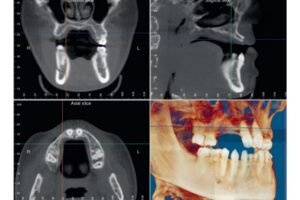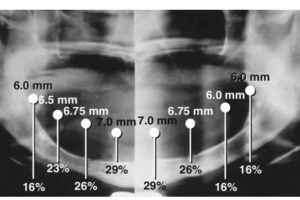Section 1- introduction to implant dentistry
Dentistry has experienced remarkable advancements in dental restorative materials, techniques, and strategies that
are predictably effective for the long-term management of tooth loss. Scientifically proven approaches have evolved
that now provide the dental patient with esthetically and functionally excellent options for tooth replacement. The
partially edentulous patient can now undergo replacement of a single tooth or several missing teeth with implant
retained crowns that provide the same function and esthetics they had with their natural teeth. Through the use of
implant stabilized and/or retained removable prostheses the completely edentulous patient no longer has to
endure compromised function and the reduced confidence that traditional full denture wearers commonly
experienced.
The restoration of dental implants used to be considered a highly advanced procedure for oral health care that
was reserved for specialists and required training beyond the regular dental school curriculum. However, most
dental schools have come to realize how valuable the service of providing implant-stabilized prostheses is to patients with missing teeth. Thus, education in implant dentistry has become a regular part of the training of a large
percentage of dental students, including, in many schools, the planning and placement of restorations on implants
in dental student patients. However, although implant dentistry has become a part of the curriculum, it remains a
complex topic requiring a sound foundation to gain competence in this field. This was the impetus for this student guide.
The guide begins with discussions of the biologic basis of hard and soft tissue interfaces between the implant and
surrounding tissues and their clinical relevance. It then moves to the presentation of an extensive approach to
implant treatment planning. The general factors that should be considered are covered, followed by specific diagnostic modalities used when planning the use of dental implants. The treatment planning section also provides the
reader with detailed information about the prosthetic and surgical considerations necessary to understand before
initiating the surgical phase of implant care. Next, the guide covers the standard set of steps typically followed
when placing an implant in a noncomplex situation. For patients whose anatomy requires modification to allow
the use of implants, the guide describes the various strategies used by surgeons to make the use of dental implants
possible. Finally, a section is provided that covers several of the more complex situations for which advanced forms
of surgery are necessary to make the patient eligible for implant-supported dental prosthetics.
The intention in this guide is to present the basic concepts that will provide the dental trainee with a solid foundation for their participation in the care of patients requiring dental implant treatment. It also helps expose the
trainee to what is surgically possible for patients who might otherwise not appear to be good candidates for implant
care.
This guide is designed to complement a well-structured multidisciplinary didactic and clinical program in
implant dentistry taught in an interdisciplinary manner by experienced educators.
The Multidisciplinary Approach to Implant Dentistry
Successful dental implant treatment requires careful treatment planning, meticulous surgical technique, and precise prosthetic restoration. The typical implant team consists of a restorative dentist, a properly trained and experienced surgeon, and a dental laboratory technician, who work together using their individual skill sets to
determine proper implant selection, placement, and restoration, and a dental hygienist to help maintain implant
health. Skilled dental assisting and business staff members round out the team.
The Multidisciplinary Approach to Implant Dentistry
Successful dental implant treatment requires careful treatment planning, meticulous surgical technique, and precise prosthetic restoration. The typical implant team consists of a restorative dentist, a properly trained and experienced surgeon, and a dental laboratory technician, who work together using their individual skill sets to
determine proper implant selection, placement, and restoration, and a dental hygienist to help maintain implant
health. Skilled dental assisting and business staff members round out the team.

